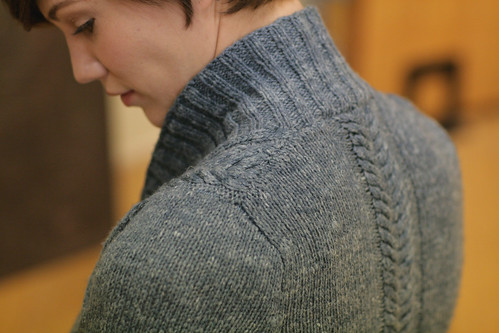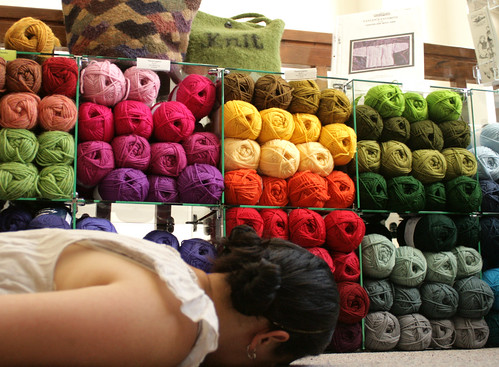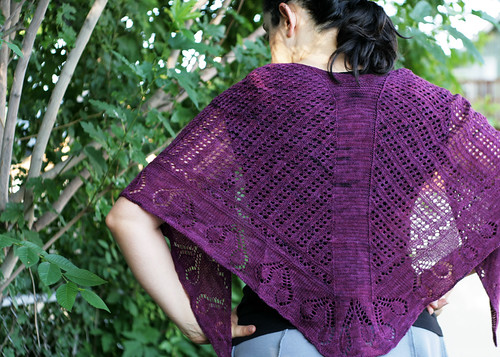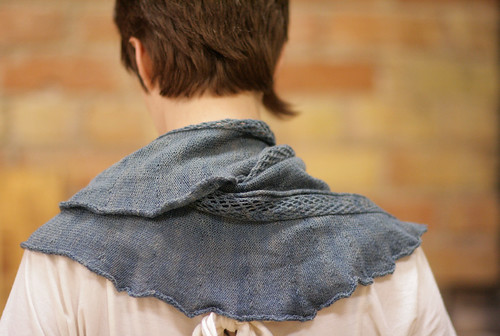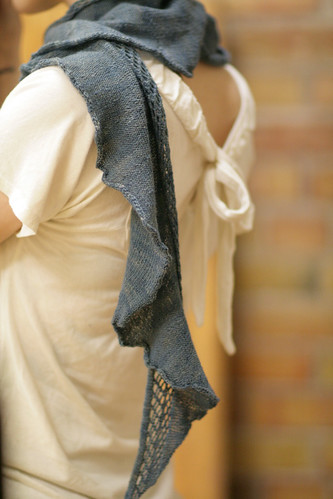Casting on should be fun and exciting and full of promise, but some times you have to cast on hundreds and hundreds of stitches, which can be a bit daunting. These tips are great, not only for lace, but for sweaters knit in the round, or anything that requires you to cast on a lot of stitches.
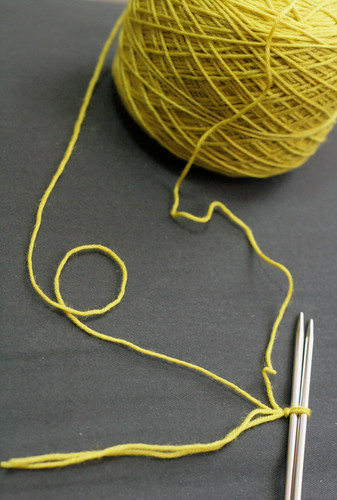
Tip #1: Use Two Strands!
If you’re doing a long-tail cast on, instead of trying to figure out how long a tail you need for hundreds of stitches (and finding out 10 sts from the end of a 400 stitch cast on that you don’t have a long enough tail… ARGH!), use 2 continuous lengths of yarn! You can use both the inside and the outside ends of a center pull ball, or alternately 2 balls. Just hold the ends of both strands together, tie your slip knot in the doubled length of yarn, leaving enough of a doubled tail to weave back in, and cast on all your stitches. Don’t forget to count the doubled slip knot strand as only one stitch!
When you’ve got the right number of stitches, just cut one end of the yarn. I like to cut the strand coming from the inside of the ball because I prefer to use the strand from the outside of the ball with which to knit the piece. This will give you two extra ends to weave in, but that’s a minor inconvenience when you compare it to starting a piece with the wrong number of stitches.
Side Note: This can also be a cool effect if you use a contrasting color yarn for the thumb strand.
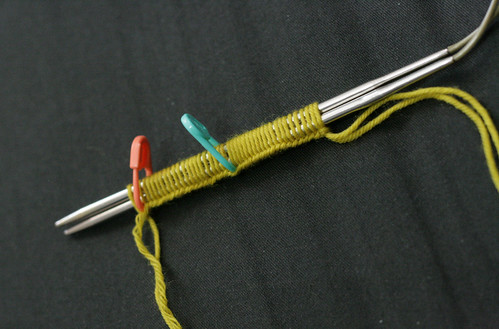
Tip #2: Place Markers!
It really sucks when you get all the stitches cast on and then find that you miscounted and have to fudge a few stitches in somewhere. Avoid this, by placing markers at consistent points in the cast on. My favorite markers to use are those little plastic safety pins from Clover because you can just unclip them and take them out before you start working your first row, whereas if you used solid markers, you would have to wait until you reached that point in the knitting to remove the marker. Plus they come in 2 colors which comes in handy in the next paragraph. Also, they fit over needles held double, which is my favorite way to get a nice flexible and stretchy cast on that makes it really easy to work your first row.
Here’s how it works… Cast on 50 sts (or 25, or 20, or 10. Whatever breakdown works best for you and your attention span), place a marker. I chose the green ones to indicate 50. Double count the 50 sts just to be sure before you cast on any further. Cast on 50 more (100 sts total), then place another marker, preferably of a different color. Double count the second 50. Keep going like this, placing alternate color markers every 50 sts and double counting until you’ve got all the stitches you need. What I love about this tip is that you can see at a glance how far you’ve got. Three green markers and two orange ones = 250 sts.
Tip #3: Take A Break!
It can be a really long slog to cast on three or four hundred stitches. If you’re using markers like Tip #2 suggests, then you can set down the needles without fear of having to count your stitches all over again. Just make sure you place a marker, cast on one stitch after it to hold it on the needles and THEN set it down.
The wrist motion involved in a long-tail cast on is much more exaggerated than the motion made by the average knitter while knitting, so take breaks from a long cast-on more often than you would if you were just knitting. Maybe stretch your hands every 100 stitches. Or get up halfway through the cast on to get a drink of water. There’s no point in damaging your best tools (your hands) before you even begin the project!
Hope these tips make your life just a *little* bit easier 🙂
Best,
Miriam

